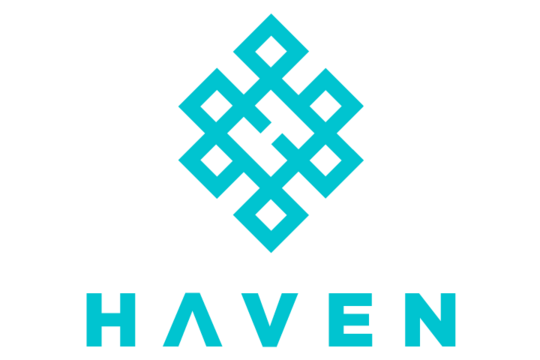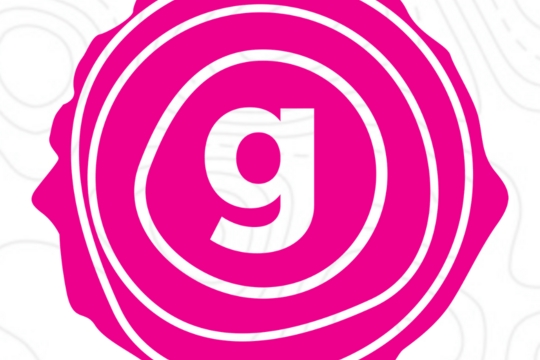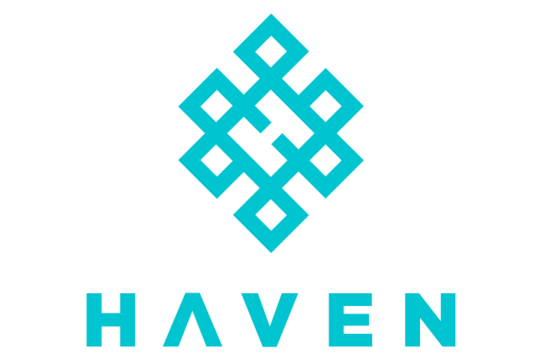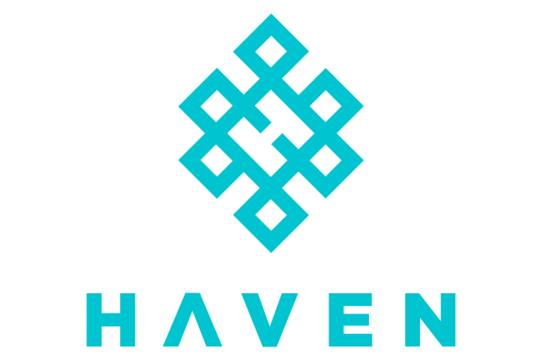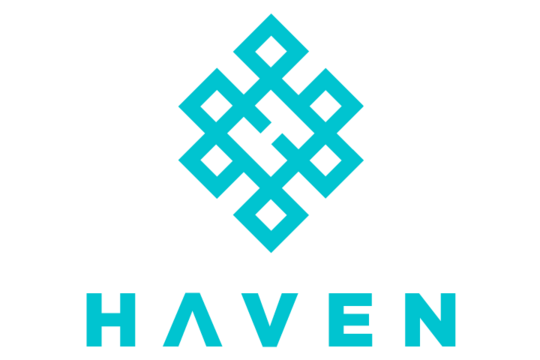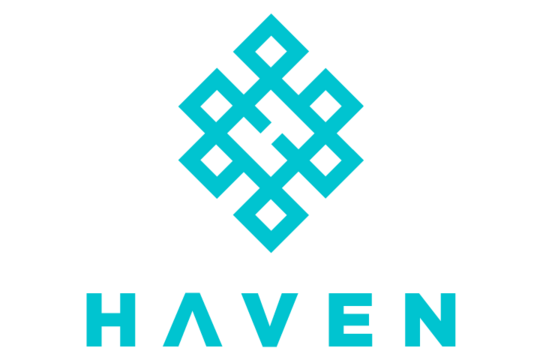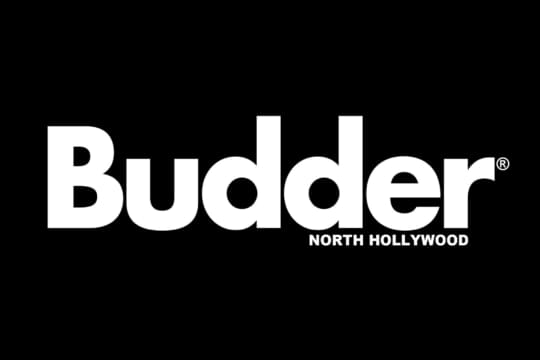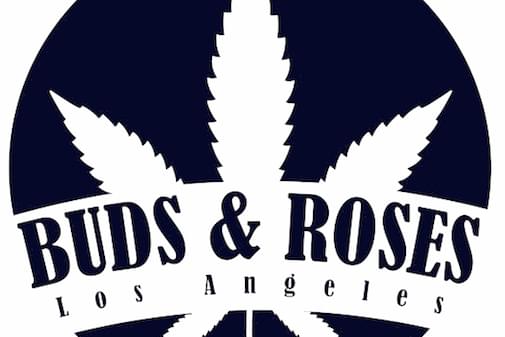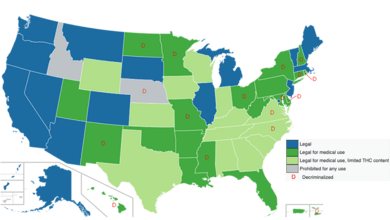
How Many States Have Legalized Medical Marijuana?
Published on 11/14/20
As the decriminalization of cannabis continues across the country, chances are high that you live in one of the states where weed is legal, or at least one of the 35 states with medical marijuana (plus Washington, D.C.) as an option for patient use. Statutes obviously vary, but a visit to the doctor to confirm a qualifying condition and an application or registration fee is normally required. Below is a guide of each of the U.S. states that currently make up the Medical Marijuana States of America.
Alaska
Legalization Date: November 3, 1998
Alaska Regulations:
Alaska was one of the first states that legalized weed for medical use. Patients cannot possess more than one ounce of marijuanaand cannot cultivate more than six marijuana plants. A maximum of three of those plants can be mature.
How to Get Your Alaska Medical Marijuana Card:
Alaska residents must complete an application packet that requires a physician's statement on the health of the patient. There is a confidential patient registry that issues the identification cards necessary for qualifying patients to purchase and possess medical weed.
Alabama
Legalization Date: May 17, 2021
Alabama Regulations:
Unfortunately Alabama's regulations are quite strict and it will take some time before anyone can purchase cannabis in the state. Dispensaries can start applying for licenses in 2022, with a planned sales date of 2023. Patients will only be able to purchase THC pills, lozenges, oils, and a few more products. Unfortunately flower, baked goods and vape products are not allowed. Patients will also not be able to exceed 50mg of THC a day.
How to Get Your Alabama Medical Marijuana Card:
At this time it is not possible to apply for a medical cannabis card. There will be a $65 fee set by the state in addition to any fees from doctors. Stay tuned for when you can get your application for the Alabama MMJ program!
Arizona

Legalization Date: November 2, 2010
Arizona Regulations:
Patients or caregivers can purchase up to 2.5 ounces of marijuana in a 14-day period from a registered nonprofit medical marijuana dispensary. Cultivation is only allowed if the patient lives more than 25 miles from the nearest dispensary. Up to 12 marijuana plants can be grown in an enclosed and locked space.
How to Get Your Arizona Medical Marijuana Card:
Prospective patients must receive verification of the possible benefits of cannabis use for their health from a licensed Arizona physician and apply via the Arizona Department of Health Services' website.
Arkansas
Legalization Date: November 9, 2016
Arkansas Regulations:
Marijuana must be purchased and labeled from a licensed Arkansas dispensary. Patients or caregivers can purchase up to 2.5 ounces of marijuana over the course of a 14-day period. Marijuana cultivation is prohibited.
How to Get Your Arkansas Medical Marijuana Card:
Interested residents must have a current diagnosis from a qualifying condition and hold an official written certification from a state-certified medical marijuana doctor.
California
Legalization Date: November 6, 1996
California Regulations:
Patients and caregivers are entitled to grow and/or possess however much marijuana is required for their personal medical needs under state law. Local ordinances can legally override the state statute.
How to Get Your California Medical Marijuana Card:
Applications can be submitted online. Patients must receive a written or oral recommendation from their physician stating that they would benefit from medical marijuana.
Colorado

Legalization Date: June 1, 2001
Colorado Regulations:
Patients and caregivers may possess up to two ounces of marijuana and up to six marijuana plants; only three can be mature at any one time.
How to Get Your Colorado Medical Marijuana Card:
Residents can apply online via the state's Department of Health & Environment website. Physicians must perform a physical exam on prospective patients in order to provide official certification.
Although Colorado is one of the recreational marijuana states, the use of an MMJ card in Colorado greatly lessens the tax the patient will pay for their medicine.
Connecticut
Legalization Date: May 31, 2012
Connecticut Regulations:
There are currently 17 licensed dispensaries where patients can purchase marijuana for medical use. Up to 2.5 ounces can be purchased monthly.
How to Get Your Connecticut Medical Marijuana Card:
Prospective patients who have conditions accepted by the state can obtain a Connecticut medical marijuana certificate if their physician deems that they qualify. The doctor must initiate the application after the exam.
Delaware
Legalization Date: July 1, 2011
Delaware Regulations:
Patients and caregivers are prohibited from growing marijuana and must purchase medical cannabis from one of the state-regulated, non-profit compassion centers. Residents with an MMJ card may possess up to six ounces of marijuana but compassion centers can only dispense up to three ounces of weed over any 14-day period. Patients can only register with one compassion center.
How to Get Your Delaware Medical Marijuana Card:
Residents who wish to obtain an MMJ card must first meet with their physician and receive a completed physician certification stating that the patient would benefit from the use of medical marijuana. An application must then be submitted to the state either online or by mail.
Florida
Legalization Date: January 3, 2017
Florida Regulations:
Patients must purchase medical marijuana from state-licensed treatment centers. They are the only businesses in Florida authorized to cultivate, process and dispense medical marijuana. The legal purchasing limit for smokable cannabis is 2.5 ounces every 35 days. Patients can possess up to four ounces at any time.
How to Get Your Florida Medical Marijuana Card:
Residents must meet strict condition standards and consult with one of the approximately 2,500 doctors who have completed state cannabis training prior to applying for an MMJ card.
Hawaii

Legalization Date: December 28, 2000
Hawaii Regulations:
Hawaii deems an "adequate supply," of medical marijuana as no more than 10 plants and four ounces of usable marijuana. Marijuana can only be purchased at eight state-licenseddispensaries.
How to Get Your Hawaii Medical Marijuana Card:
Applicants must receive a recommendation from a doctor who has a Hawaii Medical License & Hawaii Controlled Substance License or an Advanced Practice Registered Nurse who has prescriptive authority. Patients must maintain a Bona Fide Relationship("ongoing responsibility for the assessment, care and treatment of a qualifying patient's debilitating medical condition with respect to the medical use of cannabis") with their physician.
Illinois
Legalization Date: January 1, 2014
Illinois Regulations:
Patients who meet one of the 41 qualifying conditions can purchase up to 2.5 ounces of usable cannabis over a two-week period. Patients must select a dispensary with the Illinois Department of Public Health upon joining the state registry. Patients and/or caregivers can grow a maximum of five plants that are more than five inches tall.
How to Get Your Illinois Medical Marijuana Card:
Residents must obtain a written certification from their doctor and pay application fees that range from $100 for a one-year registration to $250 for three years.
Louisiana
Legalization Date: May 19, 2016
Louisiana Regulations:
The Louisiana Board of Pharmacy has chosen nine distributing pharmacies where medical marijuana is available. Patients can access a 30-day supply, but inhalation, vaping or any use of marijuana in raw or smoked form is illegal. Gelatin-based edibles, oils, extracts, pills and patches are among the acceptable forms of cannabis delivery.
How to Get Your Louisiana Medical Marijuana Card:
Instead of a card, Louisiana patients require a formal recommendation from a physician who has received a therapeutic marijuana license from the Louisiana State Board of Medical Examiners.
Maine
 Photo by Mercedes Mehling on Unsplash
Photo by Mercedes Mehling on UnsplashLegalization Date: December 22, 1999
Maine Regulations:
There is no state registry in Maine and patients can legally possess 2.5 ounces of usable marijuana and cultivate up to six marijuana plants.
How to Get Your Maine Medical Marijuana Card:
Residents can apply for a card after a recommendation from a state-licensed medical marijuana doctor and must be annually re-certified by a state-licensed physician.
Maryland
Legalization Date: June 1, 2014
Maryland Regulations:
The standard amount that patients may purchasefrom a state-licensed dispensary over a 30-day period is 120 grams of dried flower or 36 grams of THC. It is against the law for patients or caregivers to cultivate cannabis.
How to Get Your Maryland Medical Marijuana Card:
An in-person visit with a registered provider with whom the patient has a "bona fide provider-patient relationship" is required. If the patient meets the provider's criteria for treatment with medical cannabis, the provider will issue a certification. Patients must register with the Maryland Medical Cannabis Commission.
Massachusetts
Legalization Date: January 1, 2013
Massachusetts Regulations:
Patients can purchase medical cannabis at designated dispensaries and can possess up to 10 ounces (60-day supply). If physical restrictions prevent patients from accessing dispensaries cultivation is allowed in order to provide a similar 60-day supply.
How to Get Your Massachusetts Medical Marijuana Card:
All registration is done via the state's official MMJ Online System. Doctors who are registered with the Medical Use of Marijuana Program can provide medical cannabis recommendations if the patient meets certain qualifying conditions.
Michigan
 Michigan - wikipedia.com
Michigan - wikipedia.comLegalization Date: December 4, 2008
Michigan Regulations:
Michigan residents with an MMJ card may possess up to 2.5 ounces of usable marijuana and twelve marijuana plants.
How to Get Your Michigan Medical Marijuana Card:
Prospective patients must be diagnosed with at least one qualifying condition recognized by the state (there are several) and provide their medical records as proof. The patient must also prove a "bona fide physician-patient relationship," defined in part as one in which the physician "has created and maintained records of the patient's condition in accord with medically accepted standards" and "will provide follow-up care."
Minnesota
Legalization Date: May 30, 2014
Minnesota Regulations:
Smoking medical marijuana is illegal in the Land of 10,000 Lakes. The state defines "medical cannabis" as any species of the genus cannabis plant delivered in the form of liquid - including, but not limited to - oil, pill, or a vaporized delivery method that does not require the use of dried leaves or plant form. These forms of medical cannabis are only available at eight cannabis patient centersin the entire state.
How to Get Your Minnesota Medical Marijuana Card:
Patients must provide the state with certification from their physician that they suffer from a qualifying condition that could benefit from cannabis consumption. They can then visit a Cannabis Patient Center (CPC) where their history will be reviewed and the dosage and type of cannabis delivery system will be decided.
Mississippi
Legalization Date: November 3rd, 2020
Mississippi Regulations:
While Mississippians overwhelmingly voted for medical marijuana legalization with 74% saying "Yes", the regulations to implement a program are not yet in place. There is an extensive list of conditions currently approved, however, and hopefully sales will begin soon. Stay tuned for updates!
How to Get Your Mississippi Medical Marijuana Card:
It is not yet determined how one will be able to obtain a MMJ card in Mississippi. We imagine it will be similar to other states, but will keep this page updated as more regulations are put in place.
Missouri
Legalization Date: December 6, 2018
Missouri Regulations:
Ballot Amendment 2 permits state-licensed physicians to recommend marijuana use to patients with qualifying conditions and additional conditions with approval. Patients may grow six flowering plants in their homes and caregivers can grow up to 18. Patients may purchase four ounces of dried marijuana or equivalent per month.
How to Get Your Missouri Medical Marijuana Card:
Residents wishing to receive a card must get a Physician Certification Form from a licensed physician and apply via the state's medical marijuana website. Only applications submitted through the online registry are accepted.
Montana

Legalization Date: November 2, 2004
Montana Regulations:
Cardholders registered in Montana may possess no more than one ounce of usable marijuana, four mature flowering plants and 12 seedlings. If a registered cardholder assigns a caregiver to cultivate the cardholder is prohibited from growing themselves.
How to Get Your Montana Medical Marijuana Card:
Patients must provide a Physician Statement for a Debilitating Medical Conditionand register via the state's online portal.
Nevada

Legalization Date: October 1, 2001
Nevada Regulations:
Patients or caregivers may legally possess up to 2.5 ounces of usable marijuana in a 14-day period. They may also possess up to 12 plants. Nevada is a recreational marijuana state with a substantial number of licensed dispensaries.
How to Get Your Nevada Medical Marijuana Card:
Nevada's confidential state-run patient registry issues identification cards to qualifying patients via the Department of Motor Vehicles. Patients with a confirmed physician-diagnosed qualifying condition can apply for an MMJ card by contacting the Nevada Division of Public and Behavioral Health.
New Hampshire
Legalization Date: July 23, 2013
New Hampshire Regulations:
Residents who qualify for the program may possess up to two ounces of cannabis at any one time. Medical cannabis must be procured from one of the four non-profit alternative treatment centers in the state. Cultivating plants at home is currently illegal but that looks set to change very soon.
How to Get Your New Hampshire Medical Marijuana Card:
New Hampshire's Department of Health and Human Services will evaluate applications that include a written certification from a health provider, proof of residency and an application fee of $50.
New Jersey
Legalization Date: January 18, 2010
New Jersey Regulations:
Patients in New Jersey may possess up to three ounces in a 30-day period unless the patient is terminal in which case the amount is unlimited. Personal cannabis cultivation is prohibited. New Jersey's medical weed is notoriously expensive; prices for one ounce can exceed $500 before tax.
How to Get Your New Jersey Medical Marijuana Card:
Those hoping to enter the Medical Marijuana Program must have an approved debilitating medical condition that is certified by a physician who is registered in the program. The physician must be able to prove he or she has a "bona fide" relationship with a patient and has been actively treating the person for at least a year, has conducted a comprehensive review of the patient's file or has seen the patient at least four times.
New Mexico
 Photo by Maddy Baker on Unsplash
Photo by Maddy Baker on UnsplashLegalization Date: July 1, 2007
New Mexico Regulations:
Up to eight ounces may be purchased by members of the NM Medical Cannabis Program over a three-month period and cultivation is allowed - four mature plants and 12 seedlings may be grown at any one time. In order to personally cultivate, patients must apply and be approved for a separate Personal Production License.
How to Get Your New Mexico Medical Marijuana Card:
Any physician licensed to practice medicine in the state can recommend medical marijuana if the patient has a qualifying condition. Prospective patients must then submit a basic application to the state's department of health. New Mexico is one of the few states with no patient registry fee.
New York
Legalization Date: July 5, 2014
New York Regulations:
Smoking medical cannabis is illegal, as is the use of cannabis edibles. Patients may not possess more than a 30-day supply as determined by their prescribing physician and must purchase their cannabis product at a Registered Location Organization.
How to Get Your New York Medical Marijuana Card:
Residents wishing to enroll in the state's program must be certified by a doctor who is already registered in the program (physicians must complete a four-hour course approved by the New York State Department of Health) and confirms that the patient has a qualifying condition. The application platform is hosted on New York's official website.
North Dakota
Legalization Date: November 8, 2016
North Dakota Regulations:
Registered patients may possess up to three ounces of usable marijuana per 14-day period and can only cultivate plants if their home is located more than forty miles from the nearest compassionate care center. Up to eight marijuana plants are legally permissible. Cannabis must be purchased at one of eight state-wide locations.
How to Get Your North Dakota Medical Marijuana Card:
Residents must receive a written certification that they meet a qualifying condition from a doctor with whom they have a bona fide physician-patient relationship. The patient must also have an email account in order to apply.
Ohio

Legalization Date: September 8, 2016
Ohio Regulations:
Smoking medical marijuana in Ohio is illegalbut flower is sold for use in a vaporizer. Patches, creams, tinctures, extracts and edibles are also available. Patients can possess up to a "90-day supply."
How to Get Your Ohio Medical Marijuana Card:
Interested Ohioans must have one of the 21 conditions eligible for treatment with medical marijuana diagnosed by a State Marijuana Doctor located in 12 different Ohio locations. Virtual appointments are also available. The doctor's signed recommendation will then be submitted to the Ohio State Board of Pharmacy and if approved the patient will receive an email with a link to download an Ohio MMJ card.
Oklahoma
Legalization Date: June 26, 2018
Oklahoma Regulations:
Marijuana legalization only recently arrived in Oklahoma in the form of State Question 788 but the state is enjoying a robust cannabis economy thanks to relatively relaxed rules. Qualifying residents can possess up to three ounces on their person, eight ounces of marijuana at their residence, up to 72 ounces of edible cannabis, six seedling marijuana plants and six mature marijuana plants.
How to Get Your Oklahoma Medical Marijuana Card:
Any physician can recommend medical marijuana if they think a patient will benefit. Oklahoma is unique among medical marijuana states because there is no list of state-approved qualifying conditions. Some dispensaries have special MMJ days where physicians are available to provide a recommendation. Applications can then be submitted online.
Oregon

Legalization Date: December 3, 1998
Oregon Regulations:
An Oregon medical marijuana patient or caregiver may possess up to six mature plants grown at a registered grow site and up to 24 ounces of usable marijuana.
How to Get Your Oregon Medical Marijuana Card:
A signed recommendation from the patient's physicianstating that marijuana "may mitigate" his or her debilitating symptoms is necessary to obtain an MMJ card. Applicants can then file by mail or online. Patients or caregivers wishing to cultivate must pay a $200 fee and list a grow site address.
Pennsylvania
Legalization Date: April 17, 2016
Pennsylvania Regulations:
Patients cannot smoke medical marijuana or use cannabis in dry leaf or plant form. Medical marijuana may only be dispensed from a licensed dispensary to a patient or caregiver in the following forms: pill, oil, tincture, liquid, topical and in a form medically appropriate for administration by vaporization or nebulization.
How to Get Your Pennsylvania Medical Marijuana Card:
Residents must register with the state's Medical Marijuana Registryand get certification from a doctor who is registered with the Department of Health.
Rhode Island
Legalization Date: January 3, 2006
Rhode Island Regulations:
Up to 12 marijuana plants or 2.5 ounces of cultivated marijuana may be possessed by registered patients. Primary caregivers may possess up to 24 marijuana plants and five ounces of usable marijuana. Medical weed can only be purchased at one of three compassion centers in the state.
How to Get Your Rhode Island Medical Marijuana Card:
Patients must visit their doctor and have him/her fill out a practitioner form that will allow the patient to apply for a card. Residents must then submit their application to the Rhode Island Department of Health by mail.
South Dakota
Legalization Date: July 1, 2021
South Dakota Regulations:
In a history-making moment early this month, South Dakota voted to pass both medical and recreational marijuana at the same time, making it the first state to ever accomplish this task. Medical marijuana patients in the state can possess up to three ounces of cannabis and an unlimited number of plants. Additionally, localities do not have the right to tax medical marijuana patients or ban dispensaries within city limits.
How to Get Your South Dakota Medical Marijuana Card:
South Dakota only passed medical marijuana legalization in the 2020 Election earlier this month. Because of this the state has not set exact guidelines of how to apply for an MMJ card, but has set a deadline of July 1, 2021 for the state to begin accepting patients.
Utah
Legalization Date: December 1, 2018
Utah Regulations:
Smoking of cannabis is not permitted, nor is the use of candies, cookies, brownies and other edible products. Medical cannabis products must be purchased at official pharmacy locations. Personal cultivation is not allowed.
How to Get Your Utah Medical Marijuana Card:
Patients with a confirmed recommendation letter from a licensed doctor indicating a qualifying condition can purchase cannabis until the end of 2020. Beginning January 1, 2021, patients must obtain an MMJ card from the Utah Department of Health to make a purchase. Individuals may apply for a medical cannabis card at medicalcannabis.utah.gov.
Vermont
 Photo by Martin Sanchez on Unsplash
Photo by Martin Sanchez on UnsplashLegalization Date: May 30, 2007
Vermont Regulations:
A registered patient may obtain marijuana only from their designated dispensary. There are five in the entire state. Up to two mature marijuana plants, seven immature plants and two ounces of usable marijuana may be collectively possessed by the patient or caregiver.
How to Get Your Vermont Medical Marijuana Card:
The Vermont Marijuana Registry stipulates that a Qualifying Condition Verification Form completed by a healthcare professional must be submitted when applying for an MMJ card.
Washington
Legalization Date: Nov. 3, 1998
Washington Regulations:
Any adult in this recreational marijuana state can purchase up to an ounce of weed at a dispensary, but medical marijuana patients can purchase three ounces of usable marijuana, forty-eight ounces of marijuana-infused product in solid form, two hundred sixteen ounces of marijuana-infused product in liquid form or twenty-one grams of marijuana concentrate.
Medical marijuana cardholders may also grow six plants and possess up to eight ounces of usable marijuana produced from their own plants.
How to Get Your Washington Medical Marijuana Card:
Those who wish to obtain an MMJ card in Washington must get a medical marijuana authorization from their doctor, visit one of over 100 medically-endorsed storesto get a medical marijuana card and use the card to purchase products to avoid the sales tax.
Washington, D.C.
 Photo by Bob Bowie on Unsplash
Photo by Bob Bowie on UnsplashLegalization Date: July 27, 2010
Washington, D.C. Regulations:
Patients are permitted to purchase up to four ounces over the course of a month from an official medical marijuana dispensary.
How to Get Your Washington, D.C. Medical Marijuana Card:
Patients with qualifying medical conditions can obtain and use marijuana for medical purposes if their physician has provided a written recommendation that bears his/her signature and license number and asserts that the use of marijuana is medically necessary for the patient for the treatment of a qualifying medical condition or to mitigate the side effects of a qualifying medical treatment.
West Virginia
Legalization Date: July 1, 2019
West Virginia Regulations:
Medical marijuana is legal, but no dispensaries have opened. They are expected to be operational by the end of 2020. Once open, only cannabis products like tinctures, oils and pills will be available. Smoking medical cannabis is not legal in West Virginia.
How to Get Your West Virginia Medical Marijuana Card:
Medical cards are issued to successful applicants who match a qualifying condition and have a recommendation from a West Virginia physicianwho has completed the four-hour state-mandated course.
Do you use medical marijuana? Where do you live? What has been your experience navigating your state's system?
